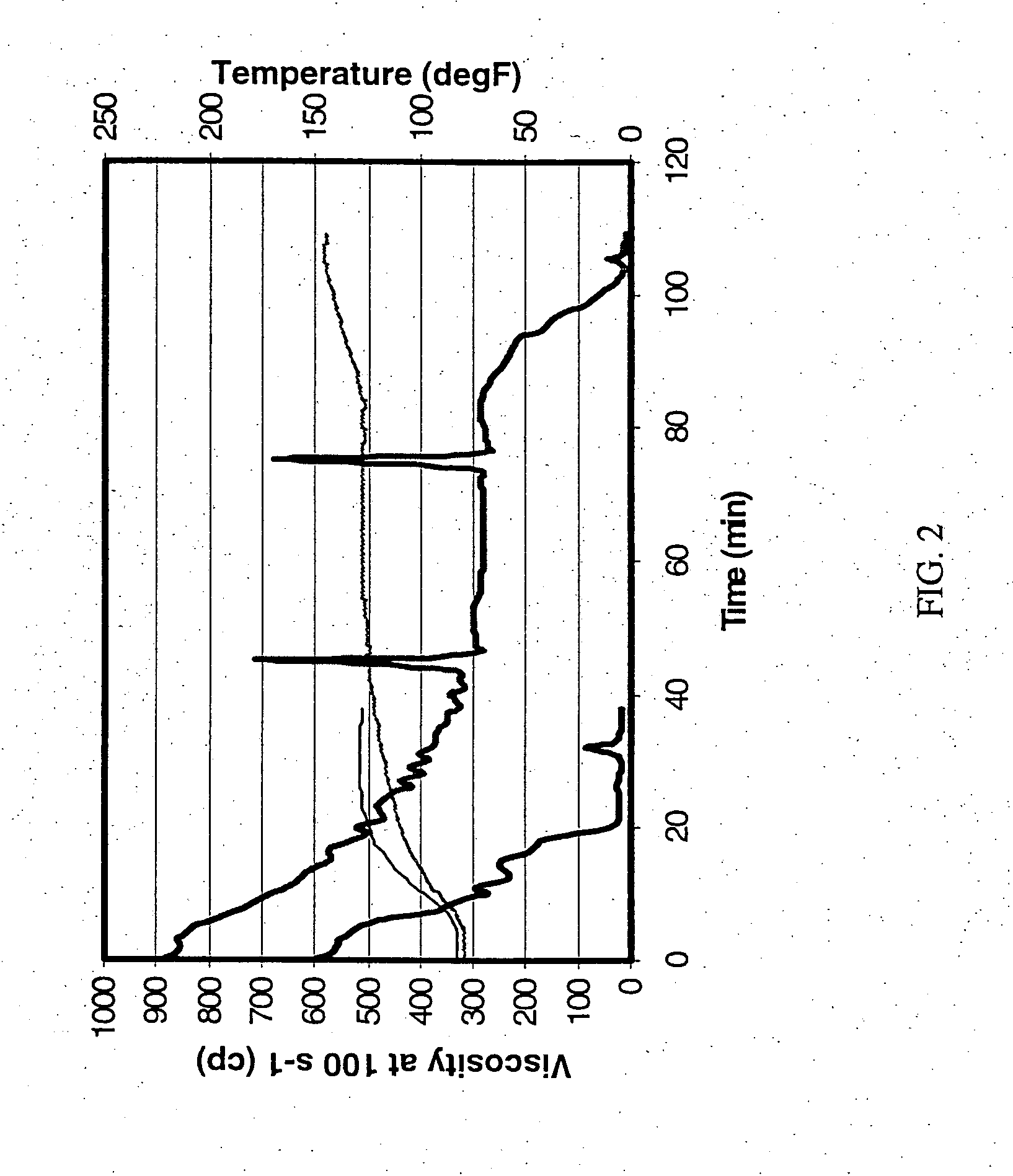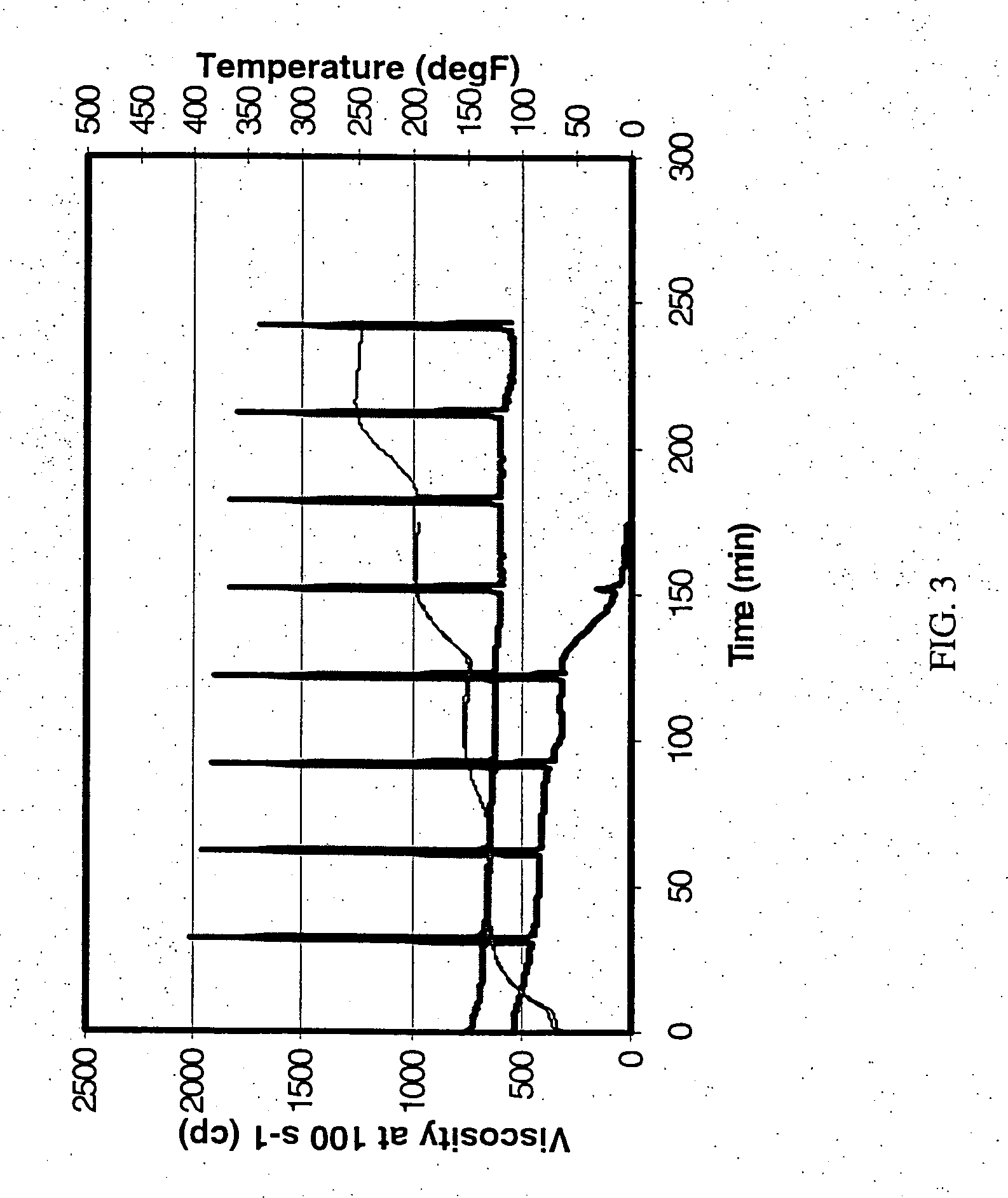Fiber assisted emulsion system
a fiber and emulsion technology, applied in the field of fluids, can solve the problems of short-lived emulsion, small particulates used in these examples, unstable emulsion, etc., and achieve the effect of reducing time and energy required to generate emulsion, accelerating the formation rate of water-external emulsion, and losing viscosity
- Summary
- Abstract
- Description
- Claims
- Application Information
AI Technical Summary
Benefits of technology
Problems solved by technology
Method used
Image
Examples
Embodiment Construction
[0020] The emulsions and methods of the present invention may use any suitable starting components or materials. Typically, the components necessary to prepare an emulsion in accordance with the present invention include an aqueous component or phase, a non-aqueous component or phase, an emulsifying agent or surfactant and fibers.
[0021] In a preferred embodiment of the invention, the aqueous component is a brine. Such brine may contain any suitable amount of salt, as well as other elements or compounds. Particularly, brines commonly found in oilfield locations or used in oilfield applications are preferred. Other suitable aqueous components include polymers. For instance, guars, modified guars, polyacrylamide polymers and copolymers, state soluble modified cellulosic polymers, such as hydroxyl ethyl cellulose (“HEC”), or xanthan. Where the aqueous component of the emulsion is a polymer, it may be beneficial to crosslink the aqueous component.
[0022] The non-aqueous component of the...
PUM
| Property | Measurement | Unit |
|---|---|---|
| temperatures | aaaaa | aaaaa |
| dimension | aaaaa | aaaaa |
| hydrophilic | aaaaa | aaaaa |
Abstract
Description
Claims
Application Information
 Login to View More
Login to View More - R&D
- Intellectual Property
- Life Sciences
- Materials
- Tech Scout
- Unparalleled Data Quality
- Higher Quality Content
- 60% Fewer Hallucinations
Browse by: Latest US Patents, China's latest patents, Technical Efficacy Thesaurus, Application Domain, Technology Topic, Popular Technical Reports.
© 2025 PatSnap. All rights reserved.Legal|Privacy policy|Modern Slavery Act Transparency Statement|Sitemap|About US| Contact US: help@patsnap.com



